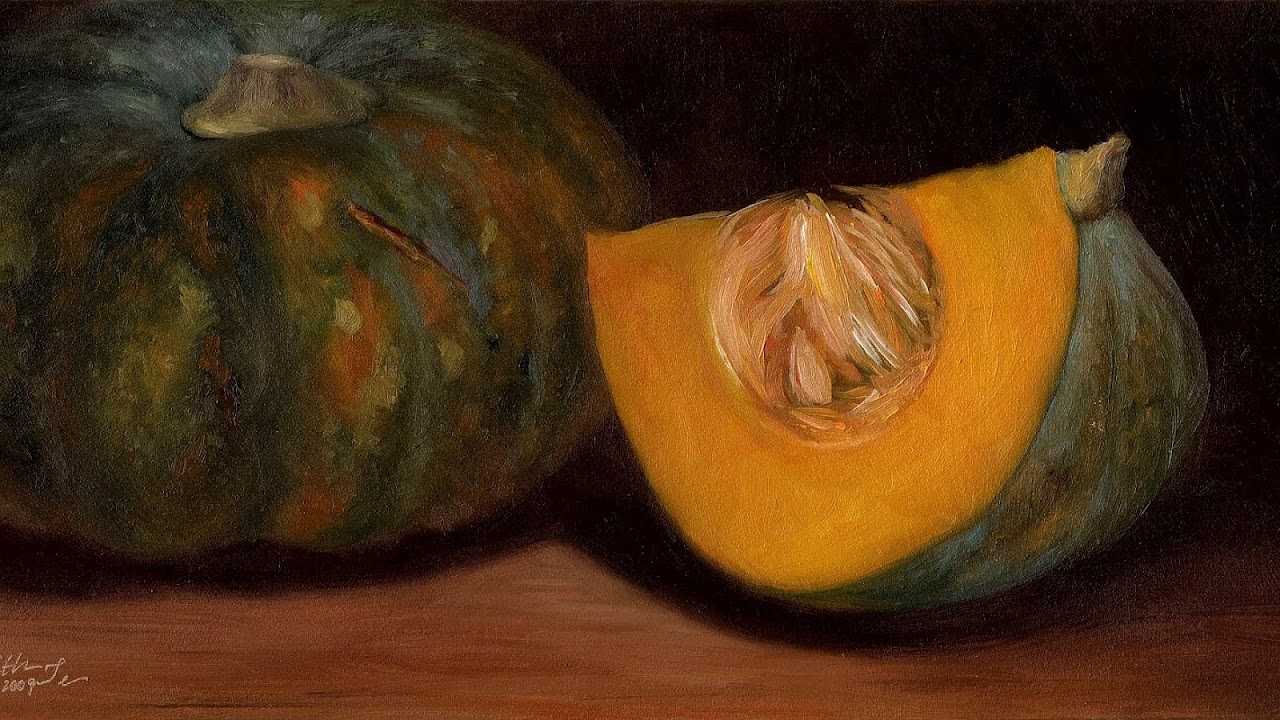
Pumpkin seed oil (Kernöl or Kürbiskernöl in German, bu?no olje in Slovenian, bu?ino ulje in Croatian, tikvino ulje or bundevino ulje in Serbian, ulei de dovleac in Romanian, and tökmagolaj in Hungarian), is a culinary specialty from what used to be part of the Austro-Hungarian Empire and is now southeastern Austria (Styria), eastern Slovenia (Styria and Prekmurje), Central Transylvania, Or??tie-Cugir region of Romania, north western Croatia (esp. Me?imurje), Vojvodina, and adjacent regions of Hungary.
The Steirisches Kürbiskernöl (styrian pumpkin seed oil) and the ?tajersko prekmursko bu?no olje (styrian prekmurjen pumpkin oil) are European Union Protected Designation of Origin (PDO) products.
The oil is an important export commodity of Austria and Slovenia. It is made by pressing roasted, hull-less pumpkin seeds, from a local variety of pumpkin, the "Styrian oil pumpkin" (Cucurbita pepo subsp. pepo var. 'styriaca', also known as var. oleifera). It has been produced and used in Styria's southern parts at least since the 18th century. The earliest confirmed record of oil pumpkin seeds in Styria (from the estate of a farmer in Gleinstätten) dates to February 18, 1697.
The viscous oil is light to very dark green to dark red in colour depending on the thickness of the observed sample. The oil appears green in thin layers and red in thick layers, an optical phenomenon called dichromatism. Pumpkin oil is one of the substances with the strongest dichromatism. Its Kreft's dichromaticity index is -44. When used together with yoghurt, the oil turns bright green and is sometimes referred to as "green-gold".
Maps, Directions, and Place Reviews
Culinary uses
Pumpkin seed oil has an intense nutty taste and is rich in polyunsaturated fatty acids. Browned oil has a bitter taste. Pumpkin seed oil serves as a salad dressing. The typical Styrian dressing consists of pumpkin seed oil and cider vinegar. The oil is also used for desserts, giving ordinary vanilla ice cream a nutty taste. It is considered a real delicacy in Austria and Slovenia, and a few drops are added to pumpkin soup and other local dishes. Using it as a cooking oil, however, destroys its essential fatty acids.
Squash Oil Video
Seed types and oil
Other types of pumpkin seed oil are also marketed worldwide. International producers use white seeds with shells and this produces a cheaper white oil. New producers of seeds are located in China.
An analysis of the oil extracted from the seeds of each of twelve cultivars of C. maxima yielded the following ranges for the percentage of several fatty acids:
The sum of myristic and palmitic acid (cholesterogenic saturated fatty acids) content ranged from 12.8 to 18.7%. The total unsaturated acid content ranged from 73.1 to 80.5%. The very long chain fatty acid (> 18 carbon atoms) content ranged from 0.44 to 1.37%.

Localisation in the seed
The oil is localised in the small lipid droplets in the cotyledon cells.
Source of the article : Wikipedia


EmoticonEmoticon